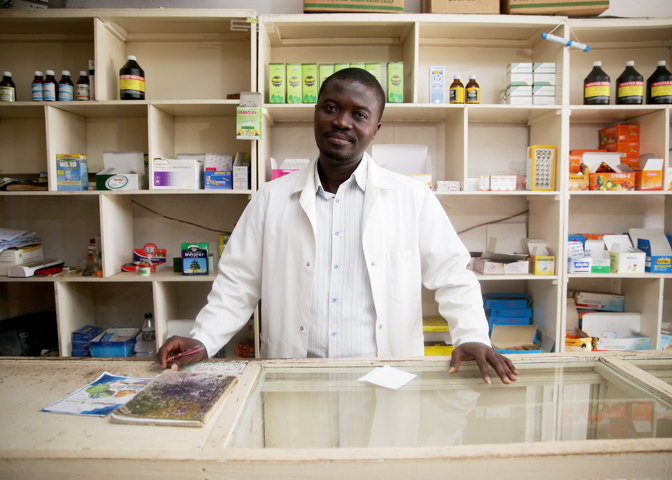
A Data Driven Approach to Increasing Access to Medicines in Africa
About a year ago, a patient in Ghana died as doctors waited for her son to bring them drugs and other supplies they needed to treat her but were not available at the hospital. After spending 2 hours looking for pharmacies or hospitals that had the drugs in stock, he got back to the hospital with the supplies only to be told that his mother died as they waited. If only he had brought the supplies an hour earlier, they would have saved her.
This unfortunate incidence is a reflection of a much bigger problem that health systems in developing countries grapple with on a daily basis which is the lack of access to medicines. The World Health Organization’s World Medicines Survey asks experts in each country to estimate the percentage of people who within an hours walk from their home have access to a minimum of 20 essential medicines. The figures show that while in 1975 less than half of the worlds population had regular access to essential medicines, this number had fallen to about one-third in 1999. However, the absolute number of people (if you take into account population growth) had remained unchanged at 1.7 billion people. This problem is particularly concentrated in Africa where about 80% of countries have just about 50% of their population having access to essential medicines.
Irregular access to medicines is not only caused by the unavailability or affordability of drugs but also the absence of a medicine information/tracking system that enables doctors and patients to locate health facilities/pharmacies that have in stock any medicine of interest. There are countless stories of drugs that have been left to expire at hospitals because of low demand even though there was a high demand of those same drugs in other areas. We need health information systems that connect clinicians and patients to a centralized inventory management system.
The internet is powerful because it democratized access to information. Because of the internet, we now have applications that allow us to hail a taxi, reserve a table at a restaurant and do other things in real-time. Why can’t we bring this same efficiency to drug distribution by developing tools that allow doctors and patients to know in real-time the exact pharmacies nearest to them that have the medicines they need.
At mPharma, we saw an opportunity to build such tools for clinicians and patients in Africa. This required us to re-think how prescriptions are written and dispensed in the digital age. In a continent with more than 99% of prescriptions still issued using pen and paper, developing a simple digital tool that will replace the prescription notepad is not a trivial matter. Adding to this difficulty is the lack of a basic internet infrastructure at most health facilities. However, if we can surmount these initial challenges the impact on our healthcare systems would be enormous. For example, looking at prescription trends we can estimate which areas have a high demand for a particular drug and where there is low demand and then use this information to determine how to distribute the drugs. We can use accurate prescription data to improve patient adherence to medication through a reminder system and finally provide a feedback mechanism for patients to easily report ADR’s and use better drug consumption data to understanding the causes of the ADR.
In August of last year, we began collaborating with the Zambian Health Ministry to implement a pilot of the mPharma solution at the Levy Mwanawasa General Hospital in Lusaka. The pilot taught us a lot of things about how the data gathered could be used to improve pharmacovigilance and patient adherence to medication. An example of this was when we identified that prescriptions for cephalexin were not been dispensed even though substitutions were available. Through this insight, proper training was given to the technicians at the dispensary and we saw a sharp increase in dispensation of the substitution. If not for this, patients would have had to spend money out of pocket to buy this drug when they could get it for free at the hospital. We also offered an opportunity for patients to report any ADR by sending SMS messages to their doctors after a prescription they received was dispensed. By connecting an event to a patient, drug and source, we helped the hospital build a better pharmacovigilance system.
It has been an exciting journey fraught with many challenges but we are happy to continue to learn more on how we can improve our tools and provide them to as many clinicians and patients as possible. If you have any ideas on how we can do better, please feel free to contact me on linkedin or email me at gregory@mpharma.co.